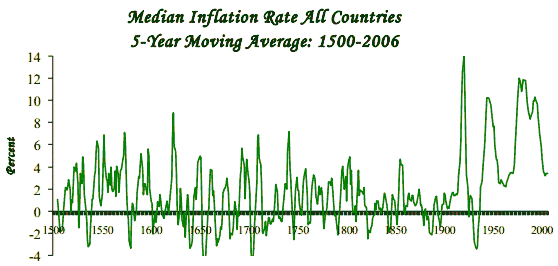...As in 2000, and as in 2007, it is not necessarily the case that stocks will decline immediately. Still, the percentage of bearish investment advisors reported by Investors Intelligence has declined to just 18.6%, from 18.8% the week earlier. The last times that bearish sentiment was below 20%, at a 4-year market high and a Shiller P/E above 18 ... were for two weeks in May 2007 with the S&P 500 about 1525, two weeks in August 1987, and 3 weeks of a 5-week span in December 1972 and January 1973, which was immediately followed by a 50% market plunge. Still, a handful of observations in March-May 1972 preceded the late-1972 peak and were followed by a modest further advance, and that lag is enough to discourage any near-term conclusions in the present instance. To complete the record, the instance before that was in February 1966, which was promptly followed by a bear market decline over the following year.
When you realize that the 2000-2002 decline wiped out 6 years of S&P 500 total returns in excess of T-bills, and that the 2007-2009 decline wiped out 14 years of excess returns, it may be clear why I am unsympathetic to the idea that we should abandon our discipline in response to a mature - though seemingly endless - market advance today. It’s been said that the best time to invest with a good investor is when he is having his own bear market. The difficulty today is the same one I described approaching the 2000 top – “over the short term, arrogant imprudence will continue to be mistaken for enlightened genius, while studied restraint will be mistaken for stubborn foolishness.” ...
Quantitative easing is not rocket fuel. At best, it is a bungee cord. ...if recent decades have taught investors anything, it is that every time the Federal Reserve drives interest rates to negative levels after inflation, it creates a bubble that subsequently bursts. As part of this painful learning experience, investors have become at least somewhat practiced in identifying bubbles within individual sectors – technology, housing, and debt, for example. The problem, in my view, is that the present bubble is systemic – with short-term interest rates at zero, the prospective returns of nearly every asset class, looking out over a 5-7 year horizon, is also close to zero. Equity investors, in particular, don’t see it because part of this bubble is captured in profit margins rather than in prices (unless one uses cyclically-adjusted earnings, which make the overvaluation more evident). But the result is the same – stock prices are dramatically elevated on the basis of the long-term stream of cash flows that investors can actually expect to receive over time. It may make investors feel better that current profit margins are elevated enough to make price/earnings ratios seem “reasonable.” But then, that’s the hook.
But don't worry: this time is different.

Không có nhận xét nào:
Đăng nhận xét